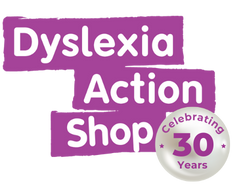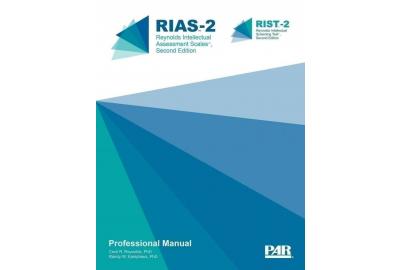If you are looking for an alternative to WRIT as many are, then this battery might work for you, although it is worth perhaps holding fire until we all hear what The Delphi Study, carried out on behalf of SASC, will reveal when the findings are presented at its conference in May of this year.
I was quite tempted by this set of tests, as I did not feel deluged by a vast array of subtests, which can happen when buying a new battery! There is a conciseness to RIAS: a few tests of ability, a few tests of memory and a couple of tests of speed of processing. This sounds promising, I hear you say, and how might we use these tests? There are two verbal ability tests and as usual, there is a component of general knowledge included in the ‘Guess What’ subtest.
An example of an item on this test might be ‘What is a combustible rock consisting chiefly of carbonized matter, and is often found in underground seams?’, while other items refer to historical figures, famous buildings and animal classification systems. What is also tricky about the way these questions are asked is that there are several components to them so there is a load on working memory: it is easy to see how the last feature might be the only one to be remembered.
The other verbal ability test, Verbal Reasoning, is an analogies test which rings obvious bells as it is very much like the WRIT subtest. Again, this test also requires general knowledge about genetics, evolution, statistics and art, and this loading feels a lot heavier than the need to understand relationships between the words.
So, in other words, if you don’t have the knowledge you cannot see the relationship but if you do have the knowledge you could probably have a good guess at the answer, regardless of the need to process any relationship: an example of this might be Hagia Sophia is to Turkey as the pyramids are to ________. What if the only fact someone has about the pyramids is that they are in Egypt? They could just give this answer, regardless of considering any verbal relationship. Many other tests of verbal ability do load heavily onto general knowledge however and this is difficult for test designers to avoid. Simple vocabulary tests are always preferable to me, as, while testing word knowledge, they can also reveal other attributes, including how well individuals can explain words, how concise they are, whether they know synonyms, and whether they have word-finding difficulties.
The two nonverbal subtests are very simply presented so there is no operational task like Block Design (eg., WASI, WAIS) or Diamonds (WRIT). The first task is called Odd Item Out. This requires looking at six images on the same page and deciding which does not belong or go with the others. A typical fictional item is shown in Figure 1.
Whilst this task does feel visual, it also loads heavily onto knowledge and semantics again. It is hard to know what aspect of cognition is being used in this task and when someone would fail. Possibly when they don’t have the knowledge (perhaps in this fictional item in Figure 1, knowledge about money and map symbols).
The second nonverbal subtest is ‘What’s Missing’: this again loads heavily onto knowledge about objects and requires familiarity with them. One example might be a set of secateurs without the latch.
Some may know this object very well and others not at all, particularly many young people and a few of the items fall into this category. There are two memory tests, neither of which are thought suitable for by SASC for DSA assessments without other tests of memory but
both are quite interesting: the verbal memory test is a bit like Memory for Stories from the Test of Memory and Learning battery (2nd edition), but has very brief items that are suitable for young children. An example for an eight-year old might be: Molly was late for her friend’s birthday party because her mother could not find her car keys. Her friend was happy to see her and said: “Never mind, I’m glad you made it.” The nonverbal memory test is a bit like Abstract Visual Memory from TOMAL 2, where the examinee is shown a design for a very short time and very briefly afterwards a page is turned and they must identify the target from an array of similar ones (see Figure 2 for a made-up example).
The stimuli for younger examinees sometimes include more semantic items where the examinee has to spot the target from an array of different breeds of the same animal, but they are also given design-based items similar to Figure 2.
There are two fast-based timed tasks which may be of interest to those of us who are looking for a replacement for the Symbol Digit Modality Test (SDMT). One is a speeded naming task where a page filled with a limited range of everyday images must be named and where performance is stopped after a short period of time. This task loads onto the ability to rapidly produce verbal information. Another is a speeded picture search, where a very small number of target images must be identified within a page filled with similar designs.
This task is very visual in nature but is also very much dependent upon the examinee’s tendency to develop visual strategies. These both work well as speed of processing tasks.
The technicalities!
The manual is easy to use and there are lots of tables available to compare various aspects of performance. While SEMs are given for indexes but not subtests, these can be calculated by using reliability coefficients: the table on page 83 shows us that reliability ranges from .81 for the Odd Item Out visual subtest to .99 for the speeded picture search. It is also worth pointing out that unlike many other batteries, T-Scores are used but again, some proficiency with statistics means that conversion is quite straightforward (see Panel 1).
Conclusion
All in all, this is a useful battery for those of us who may want to make use of updated verbal and nonverbal ability tests and I think the visual speed of processing tests are also quite useful. These can be used to compare with rapid-naming performance as well which is sometimes useful. The cost is quite high and more than double the WRIT but you will also be purchasing two speed of processing tests. Many of us will have to think carefully about what tests we might purchase in the not too distant future, but RIAS 2 could be a contender.
The article was originally published in The Dyslexia Review, Vol 3, No 1 Spring Summer 2024.
You can purchase the test here.


